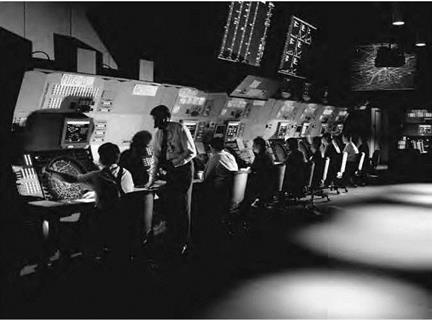Center TRACON Automation System
The computer-based tools used to improve the flow of traffic across the National Airspace System—such as SMS, FACET, and ACES already discussed—were built upon the historical foundation of another set of tools that are still in use today. Rolled out during the 1990s, the underlying concepts of these tools go back to 1968, when an Ames Research Center scientist, Heinz Erzberger, first explored the idea of introducing air traffic control concepts—such as 4-D trajectory synthesis—and then proposed what was, in fact, developed: the Center TRACON Automation System (CTAS), the Traffic Manager Adviser (TMA), the En Route Descent Adviser (EDA), and the Final Approach Spacing Tool (FAST). Each of the tools provides controllers with advice, information, and some amount of automation—but each tool does this for a different segment of the NAS.[265]
CTAS provides automation tools to help air traffic controllers plan for and manage aircraft arriving to a Terminal Radar Approach Control (TRACON), which is the area within about 40 miles of a major airport. It does this by generating air traffic advisories that are designed to increase fuel efficiency and reduce delays, as well as assist controllers in ensuring that there is an acceptable separation between aircraft and that planes are approaching a given airport in the correct order. CTAS’s goals also include improving airport capacity without threatening safety or increasing the workload of controllers.[266]
|
Flight controllers test the Traffic Manager Adviser tool at the Denver TRACON. The tool helps manage the flow of air traffic in the area around an airport. National Air and Space Museum. |











